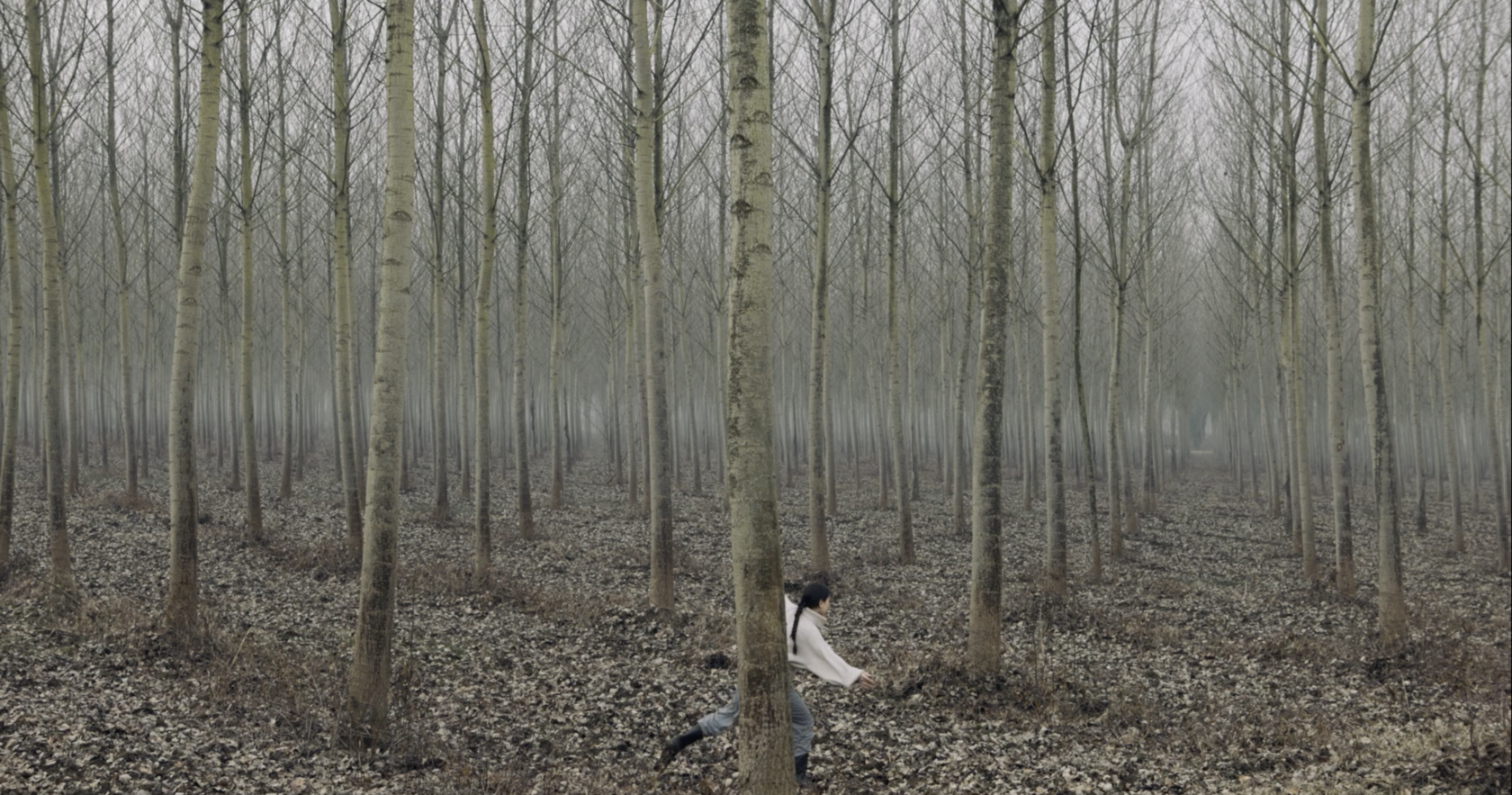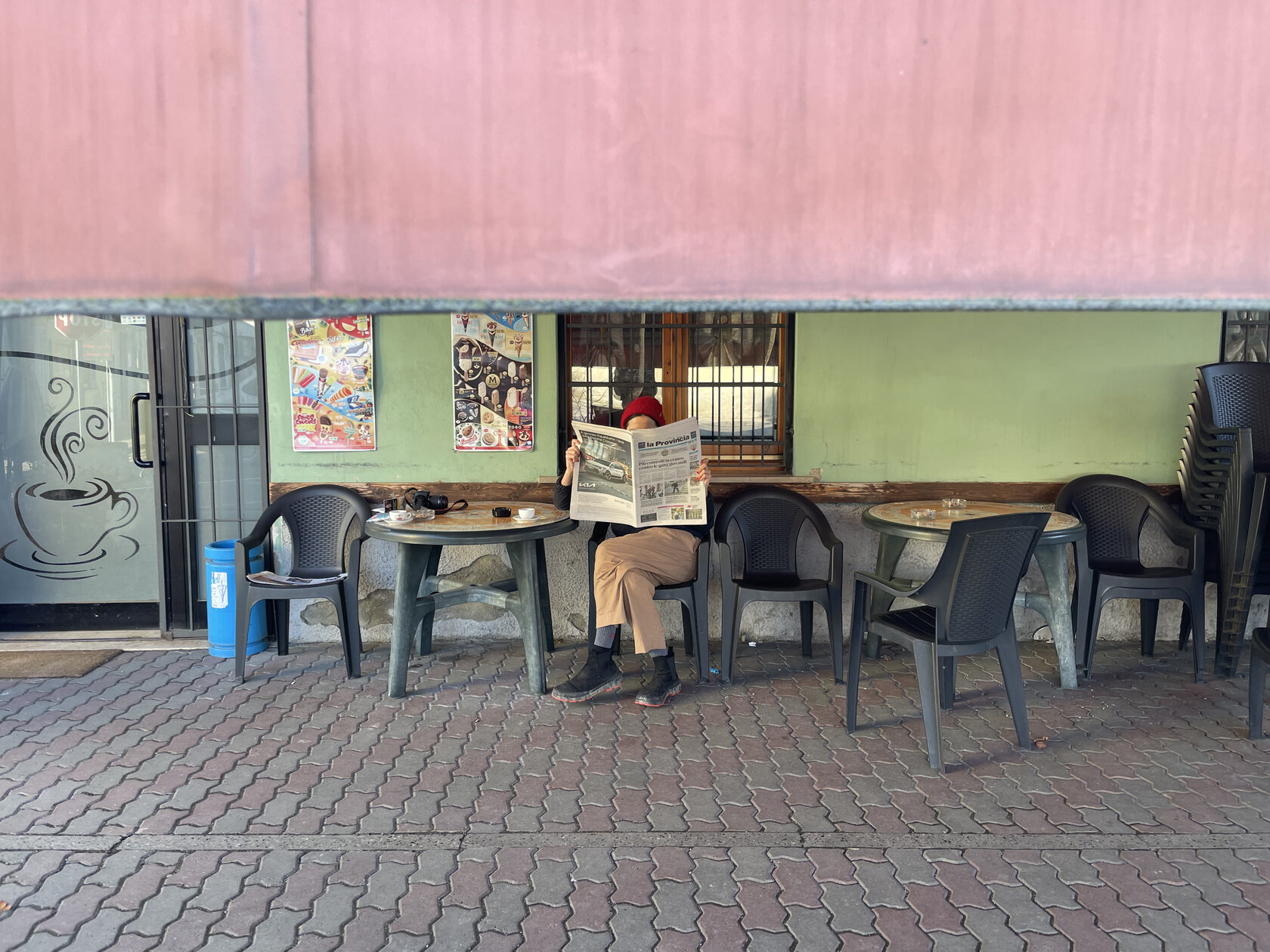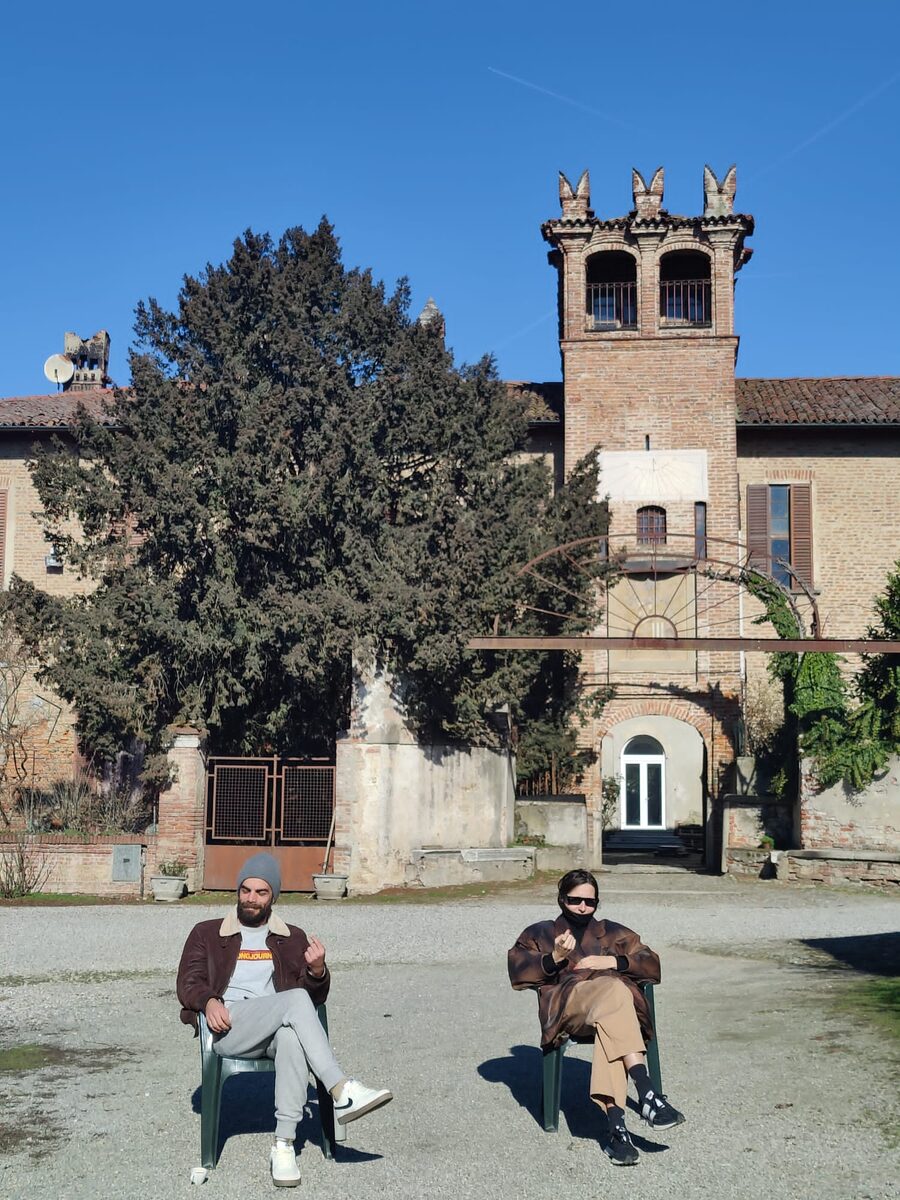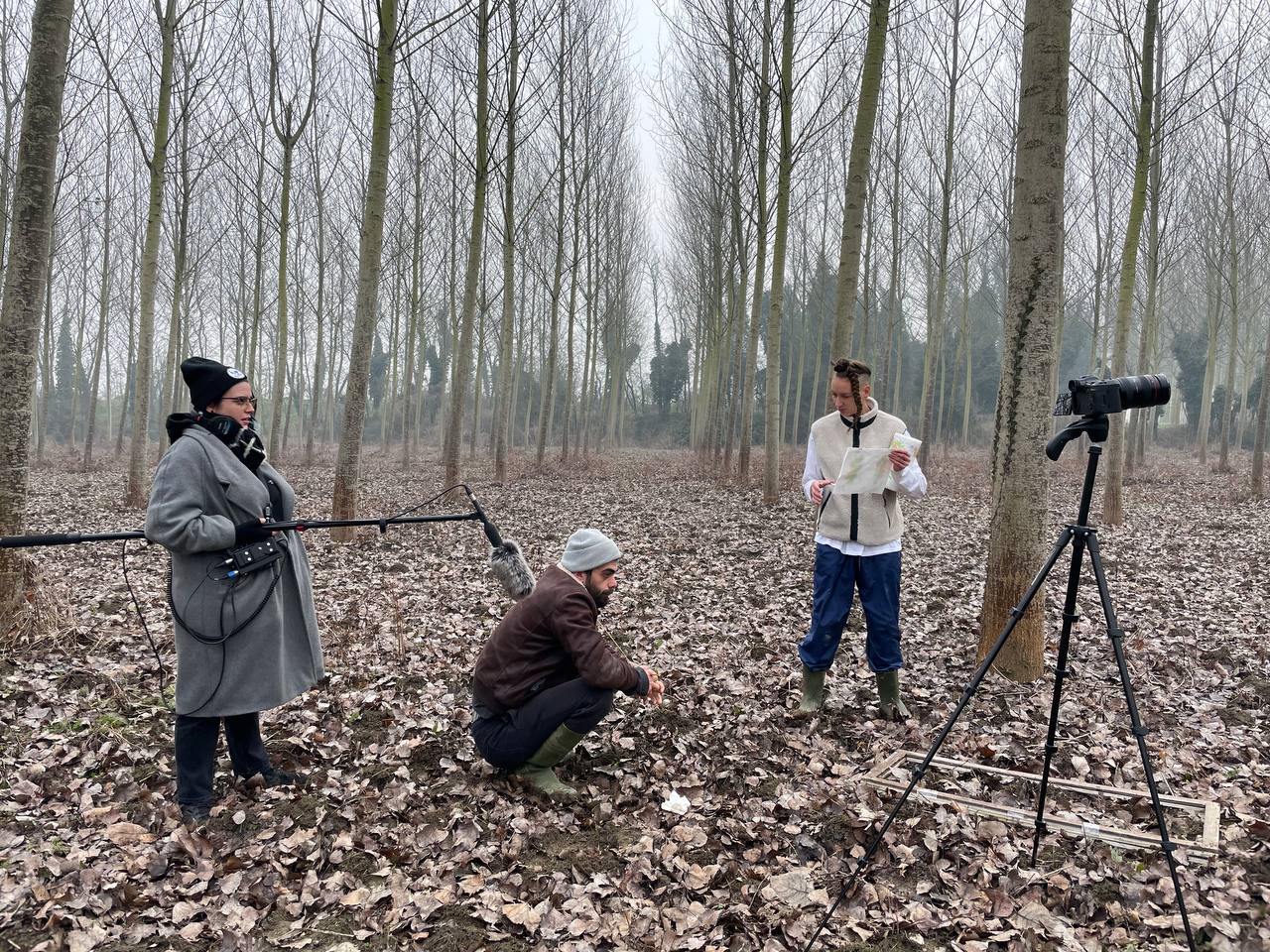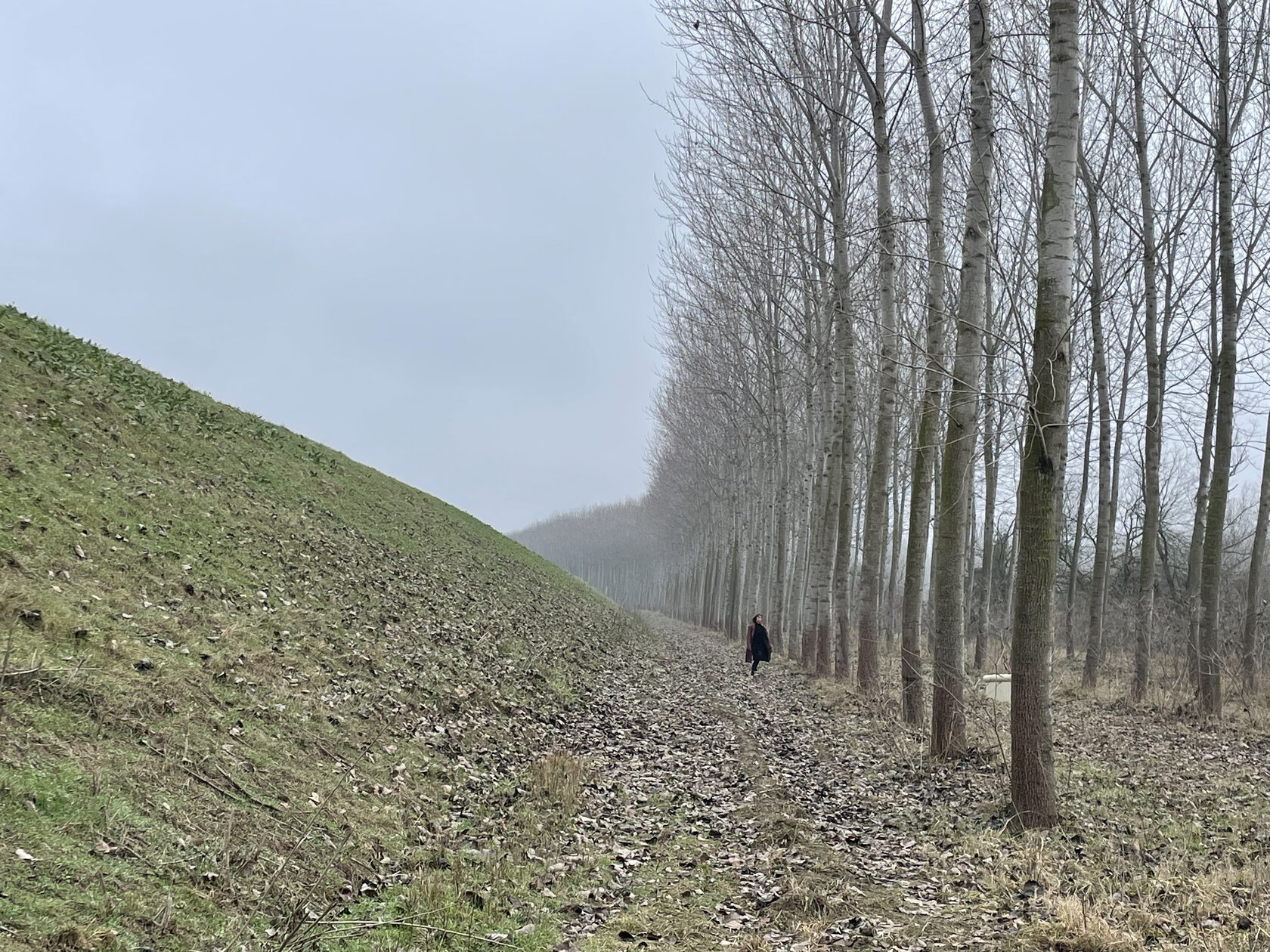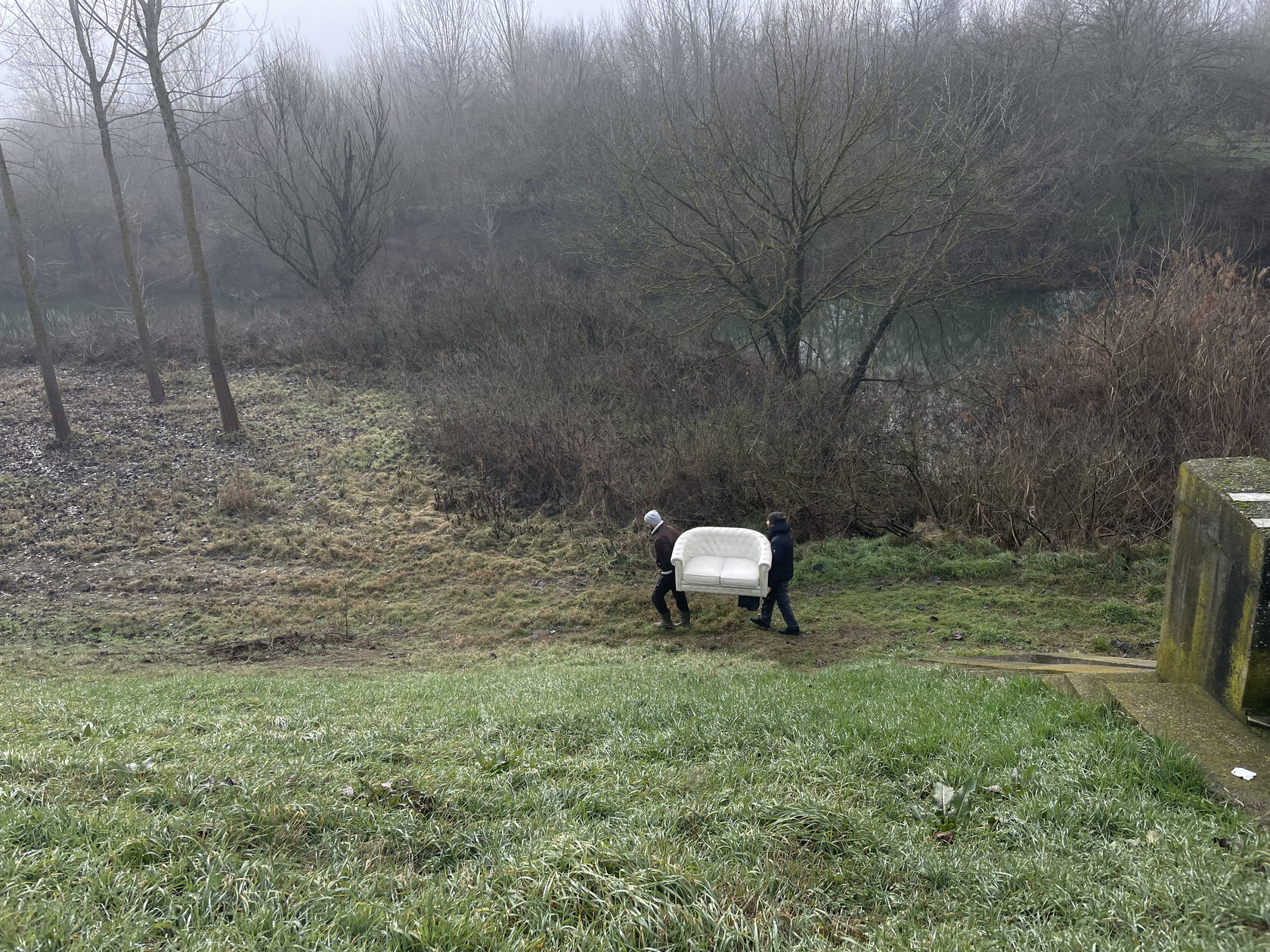We improvised together, Mauro Buttafava (our mentor and composer) endlessly played the guitar, while the performers worked with a loop station. My film director Sezer Salihi and I drew storyboards, looked for locations, everyone was suggesting something all the time–it was a continuous process of collaboration, where I was more of a photography director/cameraperson. The entire process resembled a social experiment, because I had seen my colleagues only once on Zoom, and then we began sharing the same space for 40 days–with no way to escape from one another.
The art residency itself was located in a very small town, where there was one castle, one church, one bar and one gas station. There was no railway connection with the rest of the world and one couldn’t get in or out so easily. Not far away, there was a very large Po River, a forest cultivated for paper production and vast fields where they grew rice and hunted. The last frame of the »Room of Yesterday« video was filmed on one of such fields. I remember feeling rather thrilled to be making it, because just at that moment the hunters went out hunting and started shooting. Since it was private property, they could also shoot at us by accident. But we did our best to wrap all up in time safe and sound.
So, my favorites in this series are two solos »Room of Yesterday« and »This Is Not My Cup of Coffee«. In the first one, I especially love the lyrics that Daniela Carler wrote for this solo–this endless loop, like a constant rebirth. Amazing is also the piece by Nelody Ahlroth, also with lyrics, which we filmed on the banks of the Po, in the wind and cold, noone had chances to escape from. Then there was also a physically and mentally difficult moment all of us, which I believe adds to the dramatic atmosphere to the entire work.
In one of the videos, Nelody Ahlroth dances with a huge white sofa–the trick she herself came up with. She improvised and rehearsed a lot looking for the right choreography and trying to maintain the balance in the dance. After all, it’s one thing to dance with a sofa in the studio, and another–to do it on the sandy river bank. Eventually, it was decided that she should throw the sofa off the bridge in the end–for drama. The guys, led by Camilla Pozzi, made a prototype of a sofa from cardboard and fabric and we (certianly) asked permission from the local municipality.
So, imagine that giant bridge over the Po–the spot Nelody planned to throw the sofa from, some 15-minutes’ walk from either side. An extremely cold and windy day.
Nelody was carrying the sofa onto the bridge, while Daniela was making sure all was okey. Well, almost all: of course, at a certian point we all were stopped by the police: someone had complained that we might be going to throw garbage off the bridge (as the locals often do there). But since, luckily, all our documents were in order, we followed the plan and did throw the sofa onto the sandy part of the bank, where we could then easily clean everything up later. Nelody had a phone in her breast pocket through which the director guided her, while I was filming.
We had one take for this, but everything went well. Nelody threw this fake sofa, it landed well and we immediately removed what was left of it. But the real sofa turned out to be very solid and after the filming we also used it in our final performance.
